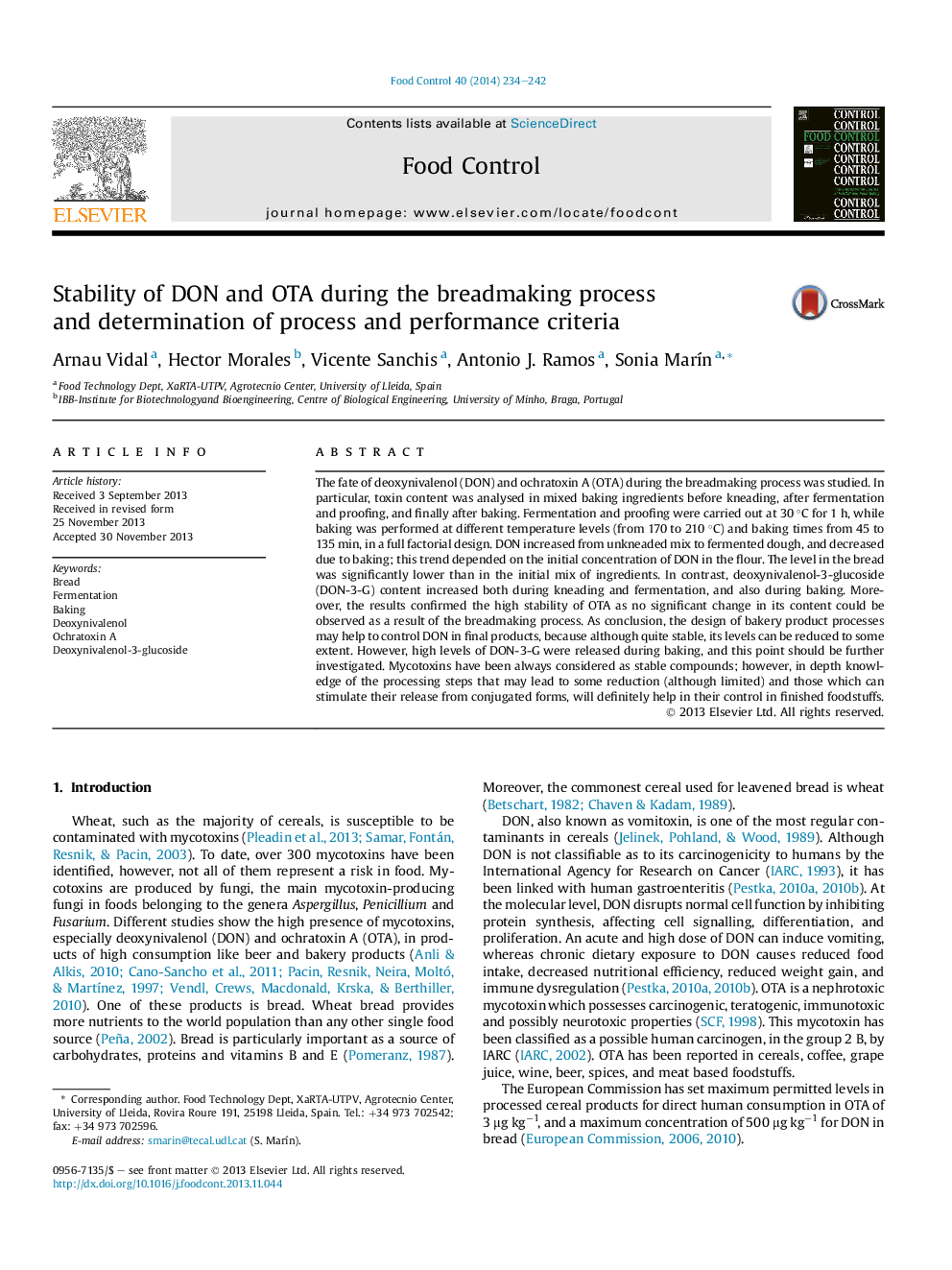| Article ID | Journal | Published Year | Pages | File Type |
|---|---|---|---|---|
| 6391874 | Food Control | 2014 | 9 Pages |
â¢DON release occurs during kneading and fermentation of dough.â¢OTA is highly stable in the breadmaking process.â¢DON-3-G was released during kneading and fermentation, and baking.â¢Modification of bakery products processes parameters may help to control DON in final products.
The fate of deoxynivalenol (DON) and ochratoxin A (OTA) during the breadmaking process was studied. In particular, toxin content was analysed in mixed baking ingredients before kneading, after fermentation and proofing, and finally after baking. Fermentation and proofing were carried out at 30 °C for 1 h, while baking was performed at different temperature levels (from 170 to 210 °C) and baking times from 45 to 135 min, in a full factorial design. DON increased from unkneaded mix to fermented dough, and decreased due to baking; this trend depended on the initial concentration of DON in the flour. The level in the bread was significantly lower than in the initial mix of ingredients. In contrast, deoxynivalenol-3-glucoside (DON-3-G) content increased both during kneading and fermentation, and also during baking. Moreover, the results confirmed the high stability of OTA as no significant change in its content could be observed as a result of the breadmaking process. As conclusion, the design of bakery product processes may help to control DON in final products, because although quite stable, its levels can be reduced to some extent. However, high levels of DON-3-G were released during baking, and this point should be further investigated. Mycotoxins have been always considered as stable compounds; however, in depth knowledge of the processing steps that may lead to some reduction (although limited) and those which can stimulate their release from conjugated forms, will definitely help in their control in finished foodstuffs.
